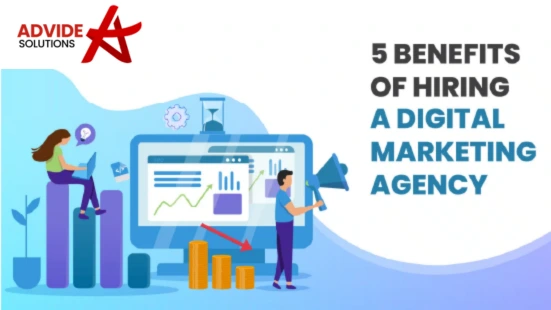
Understanding and Utilizing Retargeting in Your Campaigns
Understanding and Utilizing Retargeting in Your Campaigns
Introduction
In today’s digital landscape, gaining traffic is only half the battle. The real challenge lies in turning visitors into customers. One highly effective way to achieve this is through understanding and utilizing retargeting in your campaigns. For a digital marketing company, mastering this concept not only elevates your service offering, but also drives measurable outcomes for your clients.
Retargeting is the strategic process of re-engaging users who previously interacted with your brand – maybe they landed on your website, browsed a service page, or abandoned a form. By understanding and utilizing retargeting in your campaigns, you can capture those latent opportunities, reinforce brand recall, and boost conversion rates.
In this blog we’ll walk you through: what retargeting is, why it matters, how to implement it, best practices, common pitfalls and real-world applications, all from an agency perspective.
What Is Retargeting and Why Should You Care?
When you think about digital marketing, you often think of attracting new visitors through SEO, content marketing, PPC, social media and so on. But what happens when a visitor comes, shows interest, and then leaves without converting? That’s where retargeting comes in.
At its core, understanding and utilizing retargeting in your campaigns means recognising that the “non-converter” is still a warm lead – they have shown some intent. According to industry sources, retargeting is defined as “a dynamic digital marketing strategy designed to engage potential customers who’ve shown interest in your brand but haven’t converted.”
Why it matters for your agency
-
Improves ROI: Your clients spend money to drive traffic; retargeting lets you extract more value from that traffic by bringing visitors back.
-
Leverages brand recall: As the same visitor sees your brand again, trust and memory build up – increasing the chance of conversion.
-
Optimises budget: By focusing on users who are already familiar, you reduce waste and focus efforts more efficiently.
-
Competitive advantage: Many businesses still neglect structured retargeting, so by embracing it you position your agency ahead.
Key components
When you’re understanding and utilizing retargeting in your campaigns, you’ll want to get familiar with things like:
-
Pixels or tracking tags (to recognise prior visitors)
-
Audience segmentation (who visited, what they did)
-
Frequency capping & ad relevance (so you don’t annoy visitors)
-
Multichannel execution (display, social, email)
How to Implement Retargeting: A Step-by-Step Guide
For a digital marketing agency working with clients, here is how you can practically guide the implementation of retargeting campaigns to achieve results.
Step 1: Define the audience and mapping journey
Start with mapping the visitor journey: what pages did they visit? Did they abandon a form? Add to cart? Or simply browse? By understanding and utilizing retargeting in your campaigns, you can tailor messages to those behaviours. For instance:
-
Visitor browsed service-page but didn’t fill a lead form → moderate interest
-
Visitor abandoned quote-request or cart → high intent
Use this to segment and create lists: “service browsed”, “lead form started but incomplete”, “high-intent checkout exit”.
Step 2: Choose the appropriate retargeting method
There are multiple methods you can use:
-
Pixel-based retargeting: drop a small tracking code on your site, then serve ads to those visitors across networks.
-
List-based retargeting: upload known contact lists (e.g., CRM leads) into platforms, then serve ads specifically.
-
Dynamic retargeting: show ads that reference the exact product/service the user viewed.
As an agency, you’ll advise clients on which method suits their traffic volume, budget and objective.
Step 3: Set budgets, frequency and creatives
One mistake many make is over‐serving ads. You want to avoid fatigue. According to best practice: cap how many times a visitor sees the ad and set appropriate frequency.
Ensure your creatives and messaging differ for each audience segment. For instance:
-
For early visitors: “Explore our digital marketing services to grow your business”
-
For near-conversion visitors: “Ready to boost your leads? Get a free audit today”
Step 4: Choose channels & integration
Retargeting isn’t only about display ads on the web. You should consider:
-
Social media (e.g., Facebook / Instagram custom audiences)
-
Email retargeting (for known users)
-
Search retargeting (for people who searched but didn’t convert)
Step 5: Monitor, optimise and exclude converted users
When you are understanding and utilizing retargeting in your campaigns, it’s critical to monitor performance: click rates, conversions, cost per acquisition, ROAS. Just as important: once a visitor converts, exclude them from retargeting so you don’t waste ad-spend.
Use A/B testing to refine creatives, messaging, frequency and audience segments.
Best Practices for Campaign Success
As an agency delivering retargeting for clients, there are some rules you should follow to maximise results and maintain client confidence.
-
Segmentation is critical – The more you segment by behaviour (pages visited, actions taken) the more relevant your ads become.
-
Frequency capping – Avoid bombarding visitors; a moderate number of impressions yields better outcomes than high saturation.
-
Tailored messaging – Ads should align with where the visitor is in the funnel. Someone who visited service pages vs someone who abandoned a quote deserve different offers.
-
Exclude those who converted – Once someone becomes a client, move them out of the retargeting audience to optimise spend.
-
Use multiple channels – Don’t rely solely on one ad network. Combine display, social, email for reinforced messaging.
-
Track and attribute properly – Make sure pixels/tags are set up correctly and you understand the full user path.
-
Stay mindful of ad fatigue and privacy – Overserving ads or ignoring privacy regulations can hurt brand perception and campaign results.
Common Pitfalls and How to Avoid Them
Even when you’re understanding and utilizing retargeting in your campaigns, mistakes can happen. Here are frequent pitfalls and how to steer clear.
Mistake: Broad audience, no segmentation
When you treat all past visitors the same, you’ll waste budget on low-intent users and fail to engage high-intent ones effectively. Solution: segment by behaviour, time since visit, pages visited.
Mistake: No frequency cap
Over-serving ads can annoy your audience, waste budget and diminish returns. Always set sensible caps and monitor ad fatigue.
Mistake: Irrelevant creative
Showing generic brand ads to someone who almost converted is a missed opportunity. Instead, tailor the message: for example, “You were nearly done – here’s a special offer”.
Mistake: Not excluding converters
If someone already became a client, showing them the same retargeting ad wastes impressions and may confuse your brand messaging.
Mistake: Ignoring cross-device behaviour
In today’s multi-device environment you should account for visitors who browse on mobile, complete on desktop, or vice-versa. Make sure your tracking & audience definitions reflect this.
Mistake: Starting retargeting too early or with insufficient traffic
If your website gets very low traffic, retargeting can under-deliver. Ensure a minimum volume of visitors to make your audience meaningful.
How Your Digital Marketing Company Can Sell Retargeting as a Service
As a digital marketing agency, you’re in a strong position to package retargeting as a value-add service for your clients. Here’s how to position it:
-
Emphasise outcome: “By understanding and utilizing retargeting in your campaigns, we sequentially re-engage the most promising prospects to increase conversion rates while reducing acquisition cost.”
-
Show process: Outline how you’ll set up tracking, segment audiences, design creatives, optimise flow, and deliver reporting.
-
Offer a bundled service: Combine retargeting with your existing services (SEO, social media, PPC) as the “next step” once prospects land.
-
Provide case studies/benchmarks: Demonstrate typical improvements: e.g., “Clients have seen a 30-50% uplift in conversion rate when retargeting was layered on top of existing traffic.”
-
Transparent metrics: Commit to KPIs such as Return On Ad Spend (ROAS), Cost Per Lead (CPL), frequency, incremental lift.
-
Client education: Help your clients understand that retargeting isn’t a magic bullet but a strategic layer — it works best when traffic flows and tracking is in place.
Future Trends & What to Watch
The world of retargeting is evolving — as you help clients stay ahead, keep an eye on these shifts:
-
Privacy and cookie-less future: As third-party cookies phase out, alternate methods (first-party data, contextual targeting, email list retargeting) become more important.
-
Cross-device & cross-platform sophistication: Campaigns will increasingly stitch together behaviour across devices and platforms for seamless retargeting.
-
AI & predictive audiences: Using AI-driven platforms to identify which past visitors are most likely to convert and tailor ads accordingly.
-
Dynamic creative & personalisation: Showing the exact service/product the visitor viewed, with tailored messaging and offers, continues to grow.
-
Integration with full funnel marketing: Retargeting will become even more embedded into customer lifetime journey rather than just bottom-funnel conversion.
Conclusion
For your agency, mastering understanding and utilizing retargeting in your campaigns isn’t just a nice-to-have — it’s a strategic differentiator. By effectively re-engaging visitors who have already shown interest, you deliver better outcomes for clients, maximise budget efficiency, and deepen your service offering.
Remember that retargeting works best when it’s thoughtful: you segment intelligently, tailor creatives, avoid ad fatigue, exclude converted users, track properly, and optimise continuously. With the approaches outlined here, your company is well-positioned to leverage retargeting as a strong pillar of modern digital marketing.
By embedding this service into your client roadmap — from initial traffic generation through to conversions and retention — you drive value that both you and your clients can measure and celebrate. Start planning your next retargeting campaign today, and help your clients convert the visitors they already have.





